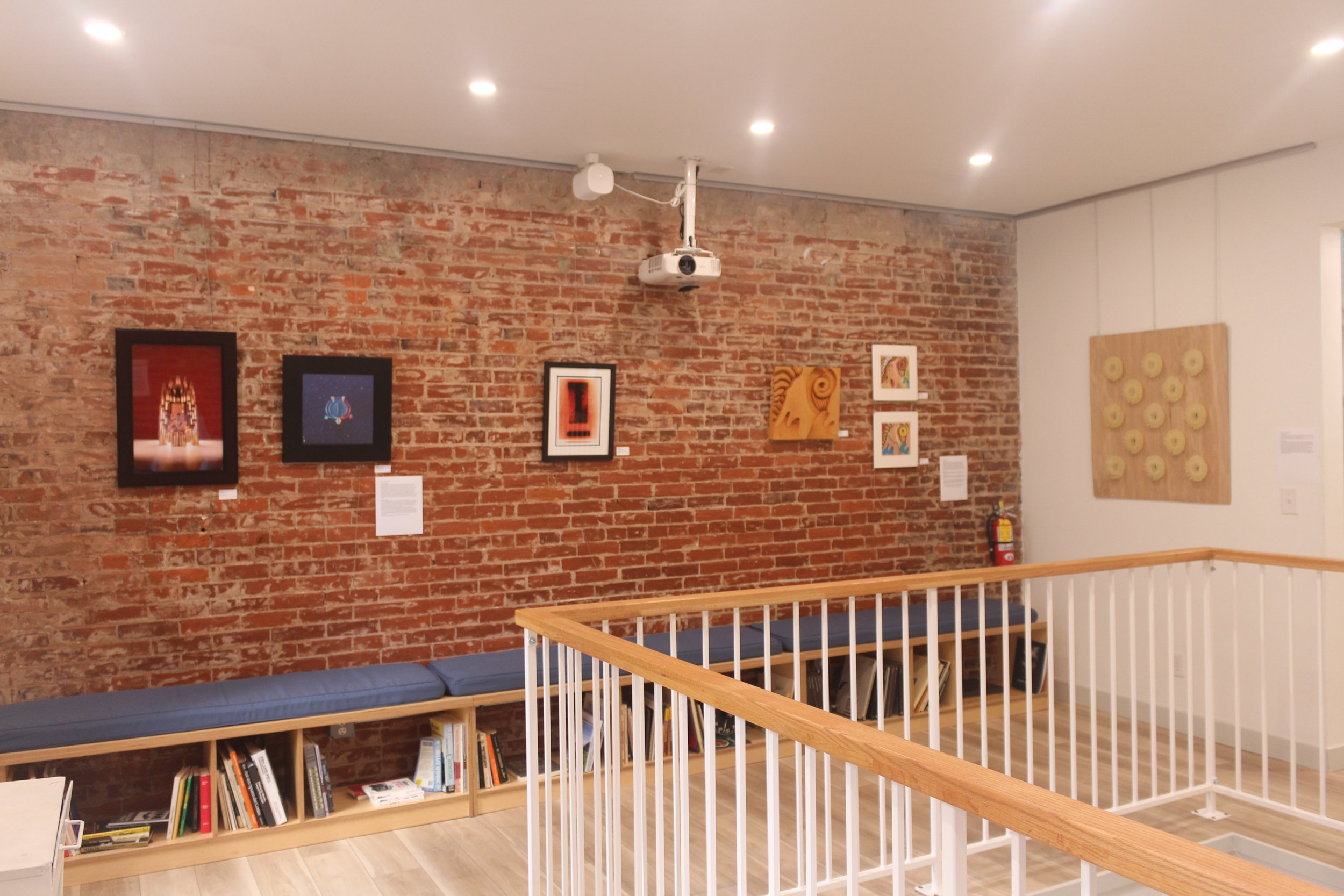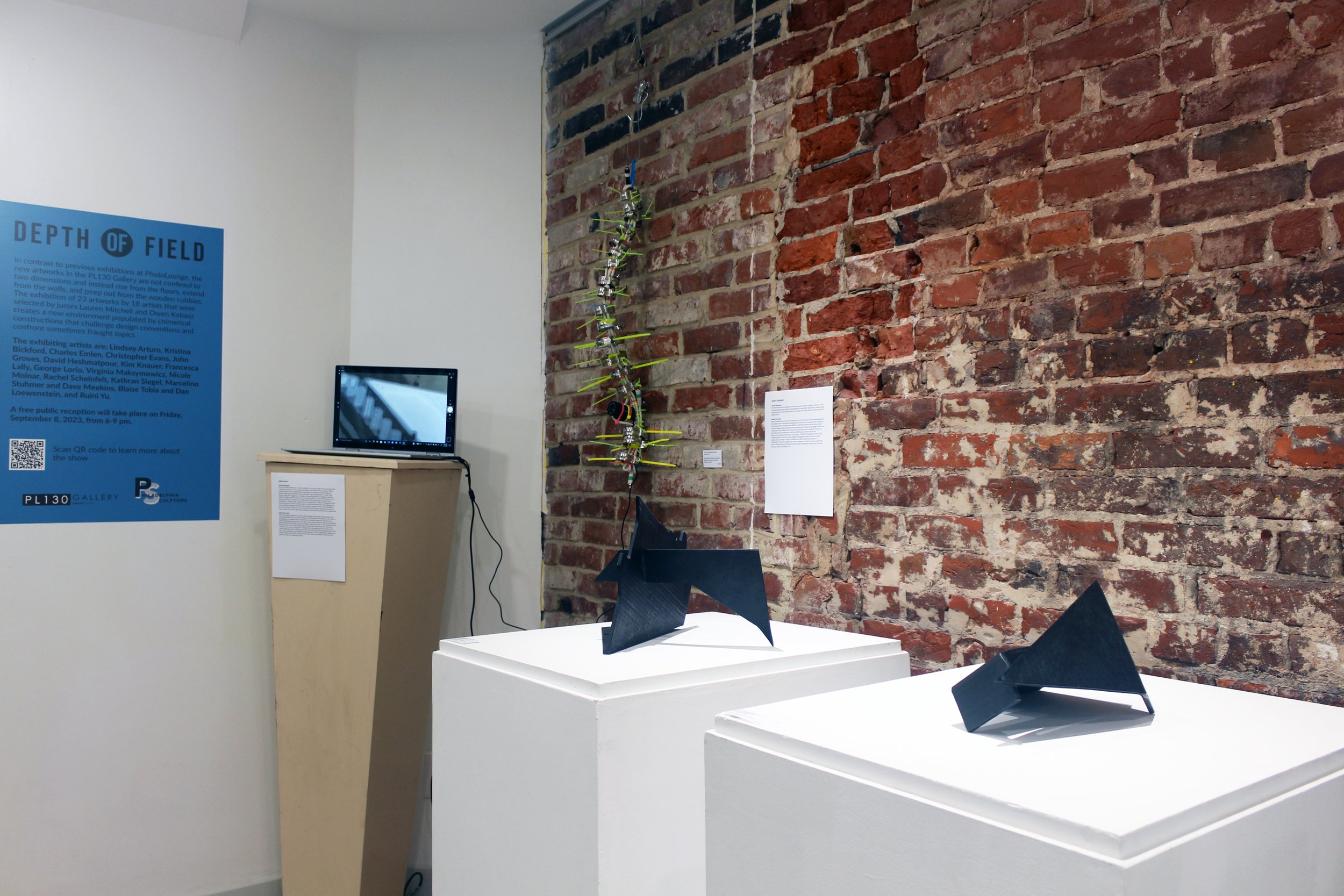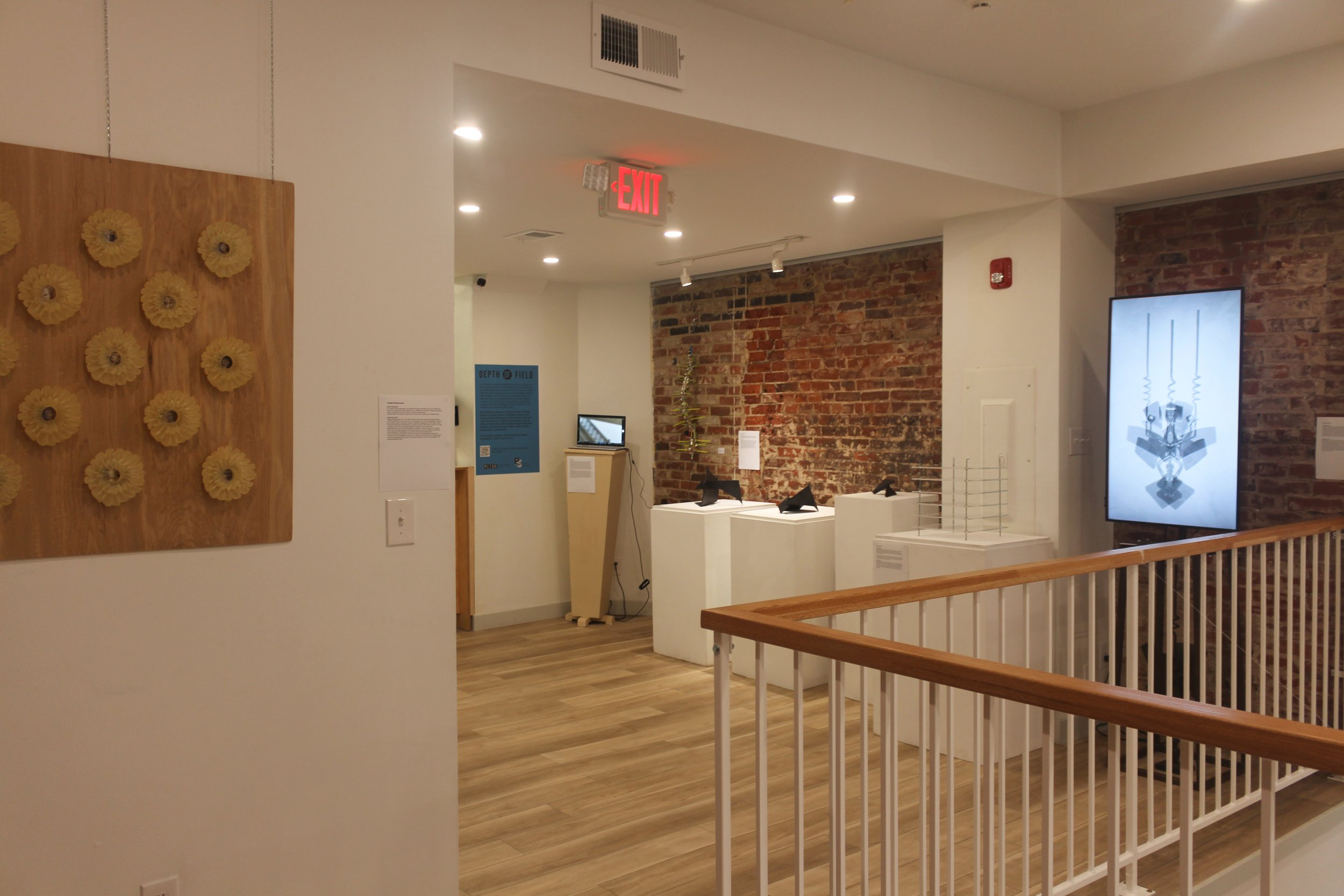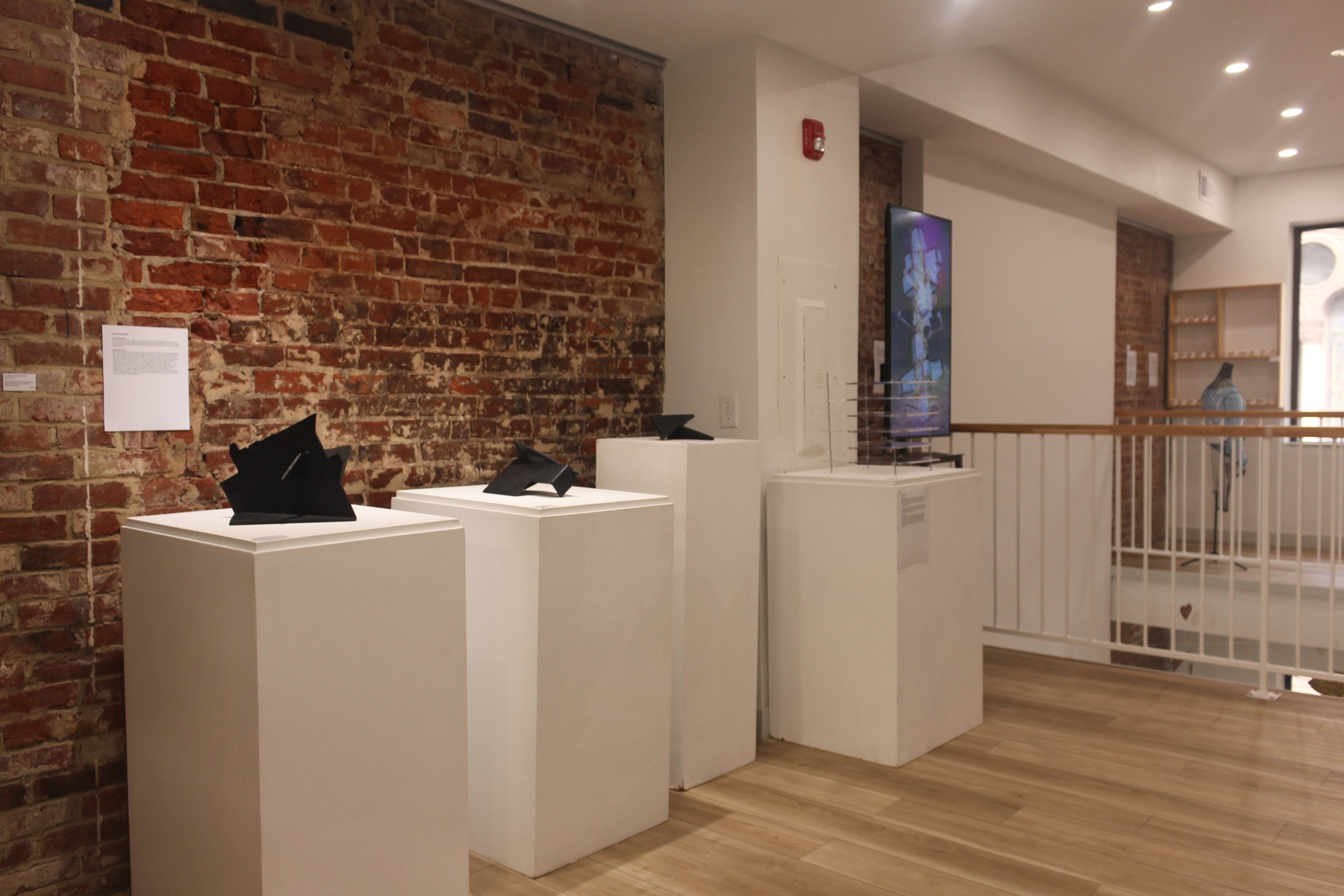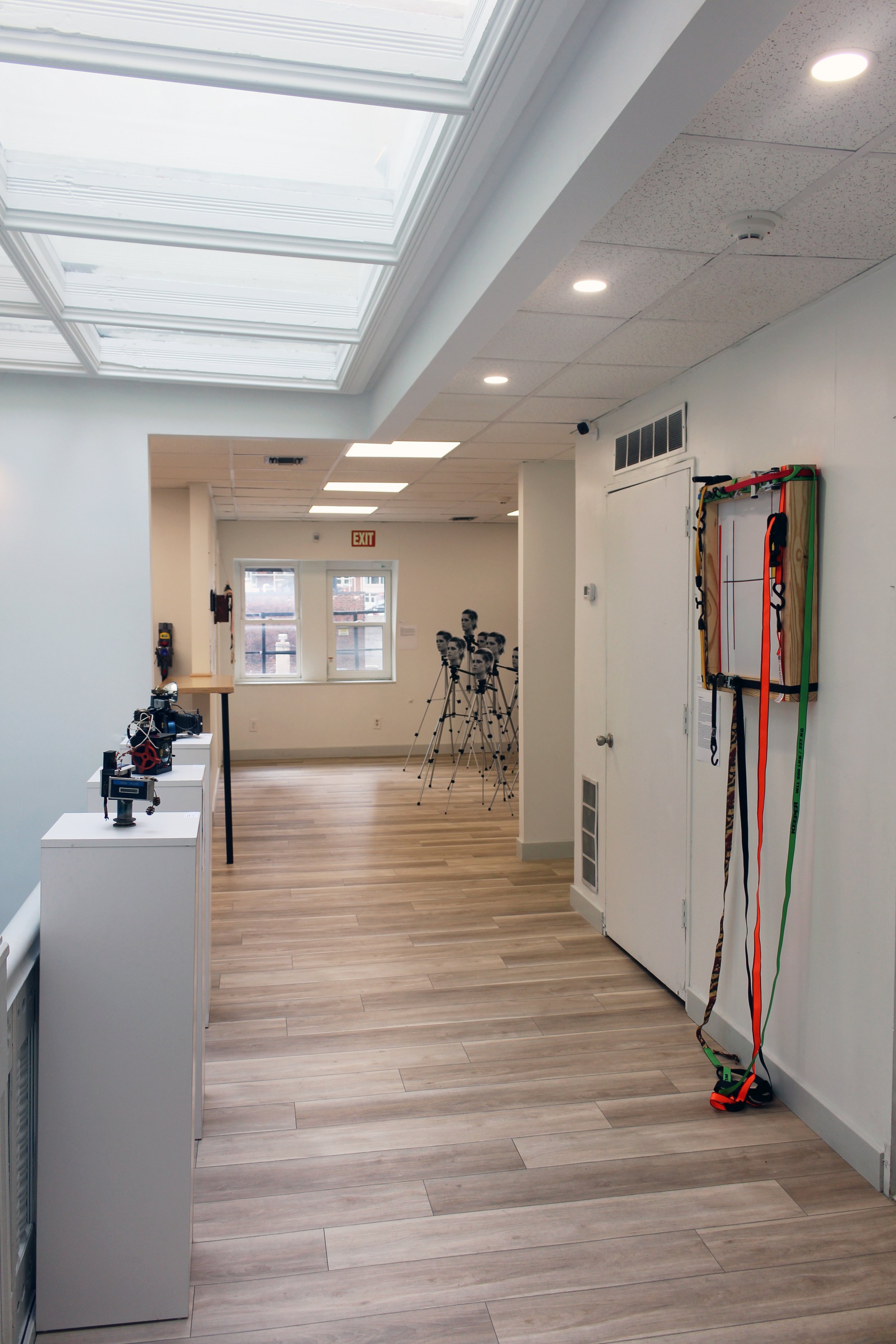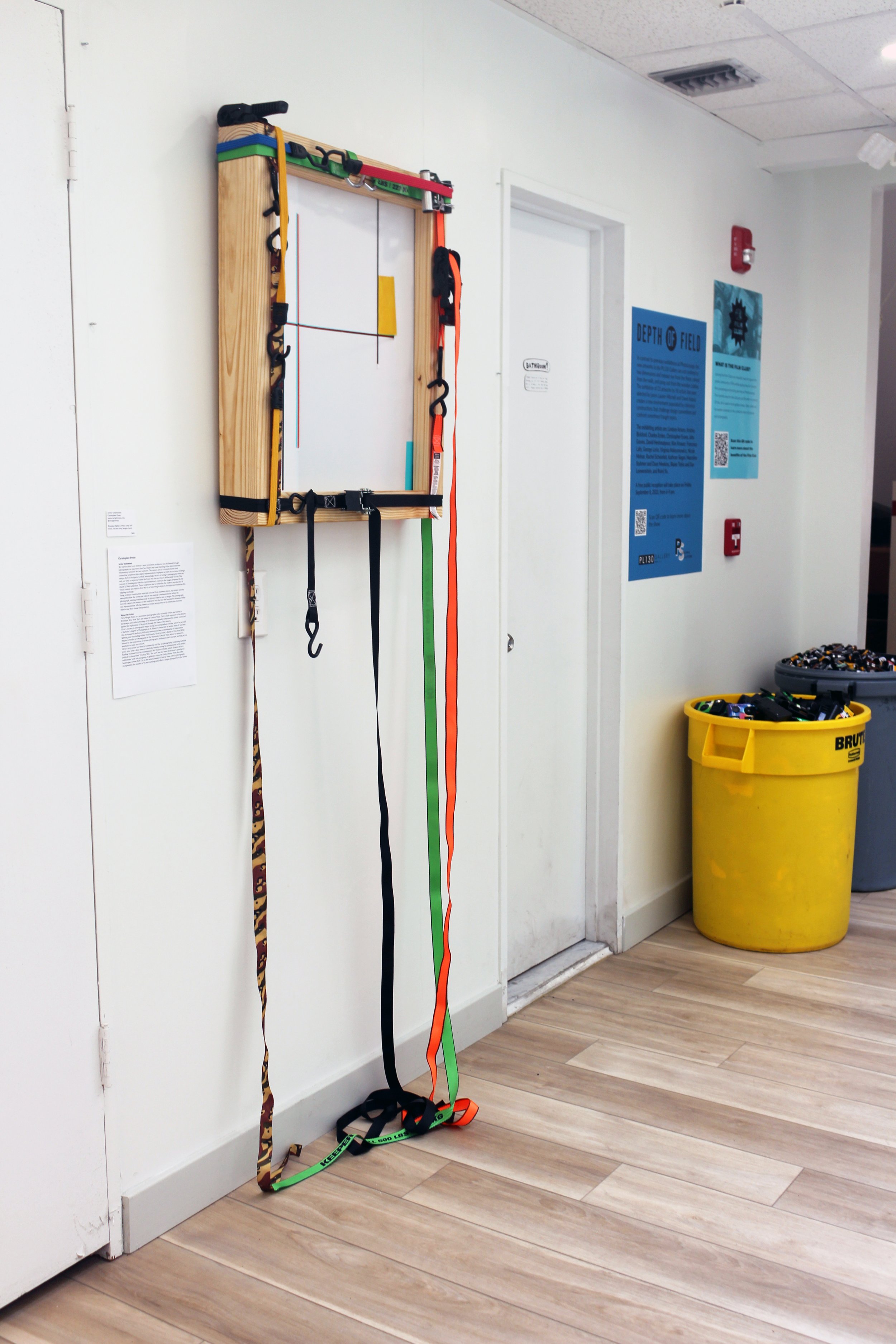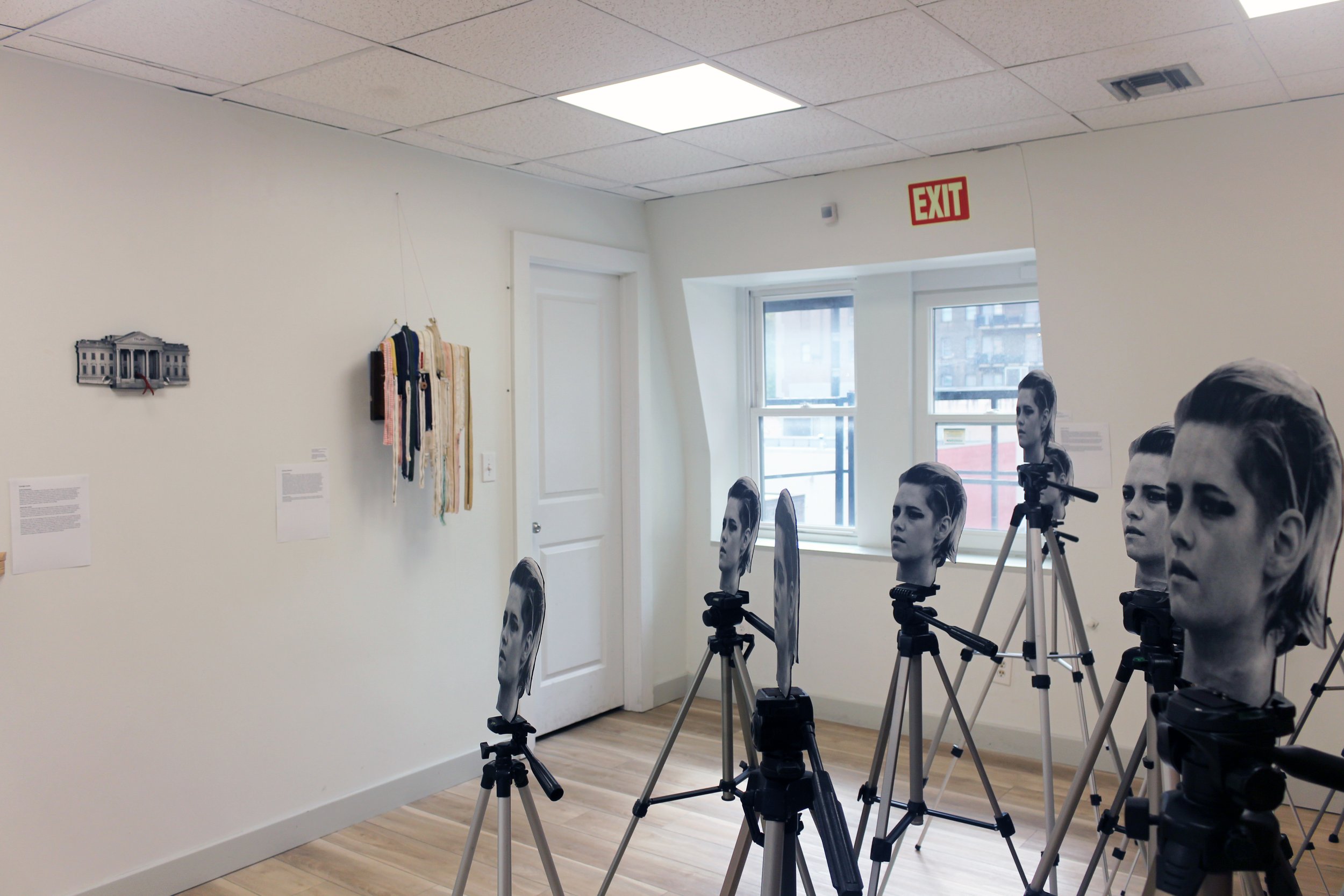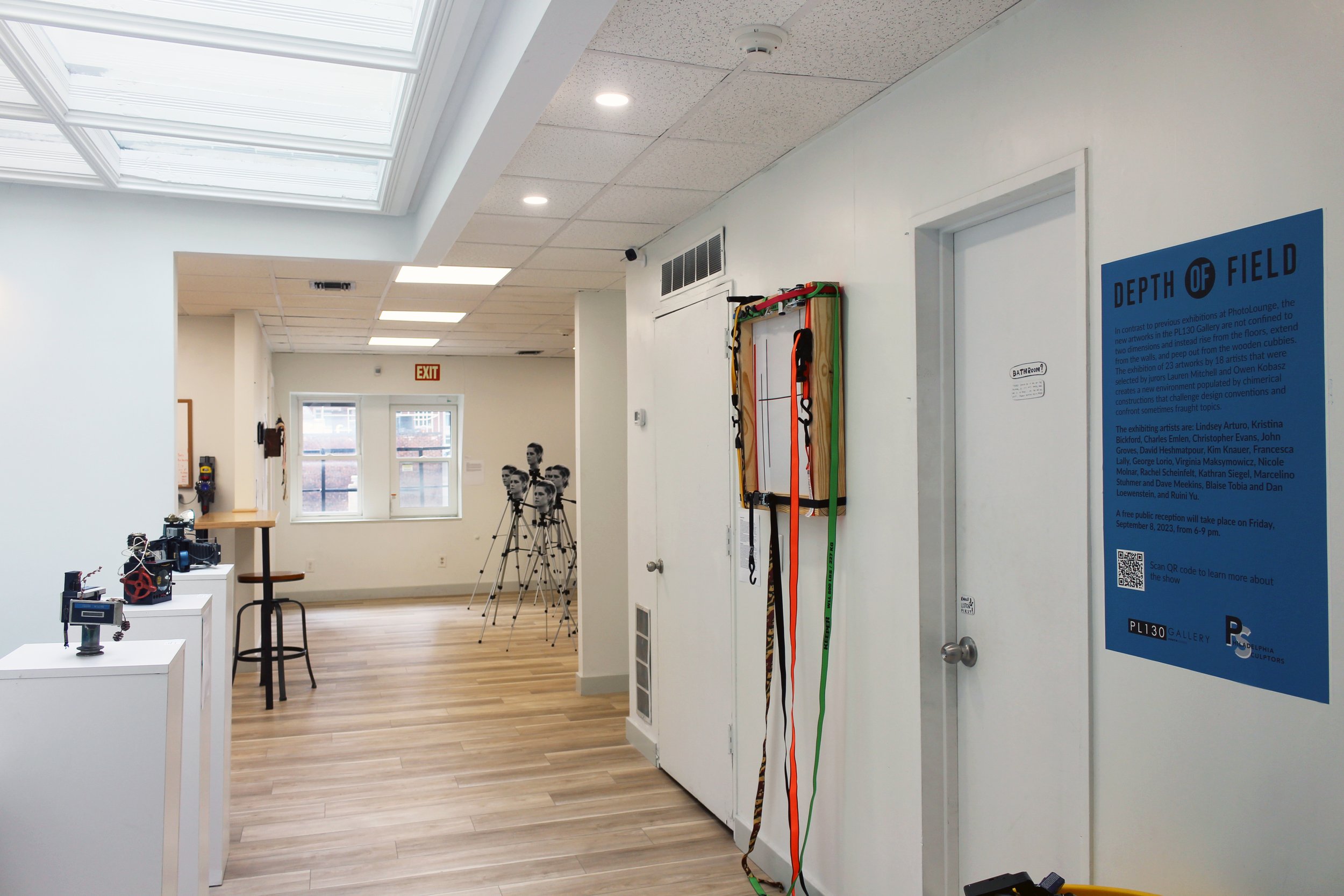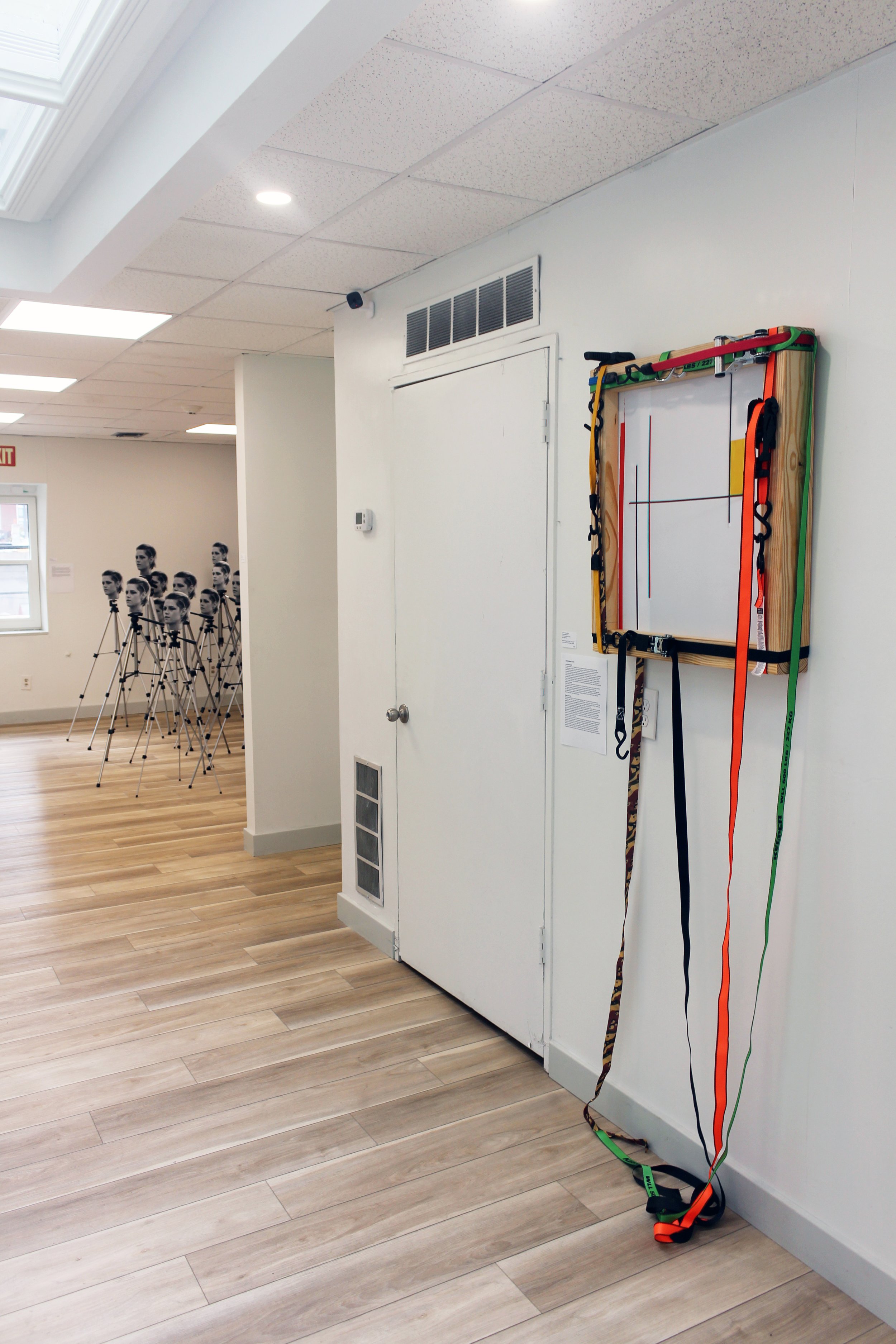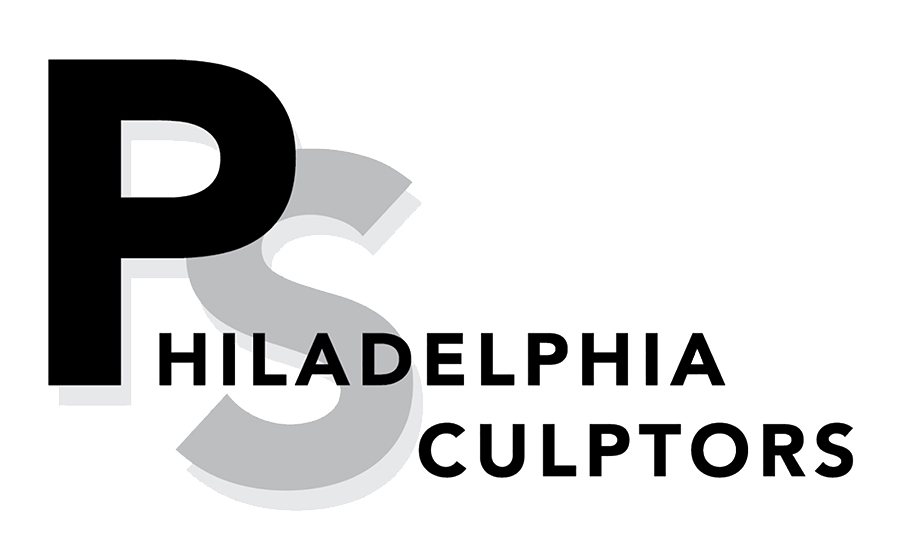Depth of Field
August 7 – September 30, 2023
at PhotoLounge
130 S. 17th Street, Philadelphia, PA
Public reception: Friday, September 8, 2023, 6-9 pm
Philadelphia Sculptors has created another opportunity to show how creative our artists can be when presented with new challenges. For our latest exhibition, PS and the PL130 Gallery at PhotoLounge are collaborating to present Depth of Field, a unique exhibition of artworks that combine photography with sculpture. On view from August 7 - September 30, 2023, at PhotoLounge in Philadelphia, PA, the exhibition celebrates the unexpected and the irreverent as artists display original ways of connecting the two disciplines. A free public reception took place on Friday, September 8, 2023, from 6-9 pm.
In contrast to previous exhibitions at PhotoLounge, the new artworks in the PL130 Gallery are not confined to two dimensions and instead rise from the floors, extend from the walls, and peep out from the wooden cubbies. The exhibition of 23 artworks by 18 artists that were selected by jurors Lauren Mitchell and Owen Kobasz creates a new environment populated by chimerical constructions that challenge design conventions and confront sometimes fraught topics. The exhibiting artists are: Lindsey Arturo, Kristina Bickford, Charles Emlen, Christopher Evans, John Groves, David Heshmatpour, Kim Knauer, Francesca Lally, George Lorio, Virginia Maksymowicz, Nicole Molnar, Rachel Scheinfelt, Kathran Siegel, Marcelino Stuhmer and Dave Meekins, Blaise Tobia and Dan Loewenstein, and Ruini Yu.
Some of the artists concentrate on the artistic and photographic processes themselves. Others conceptually and visually interweave photographic images with constructed and manufactured objects to address issues that include gender constructions, illness, cinematic iconography, visual interpretation, identity, contemporary social issues, memory, art and science, art history, and psychology.
Blaise Tobie and Dan Loewenstein
George Lorio
David Heshmatpour
Working with both surface and depth, artists mix the literal with the metaphorical and make statements about contemporary social and political issues. Photographer Blaise Tobia and sculptor Dan Loewenstein are interested in the materiality of environments. In their work Fortifications Light Boxes, photos of bricked up inner city storefronts are backlit by light boxes and framed with simulated brick and concrete, alluding to the tragedy of stores that can no longer invite their customers inside. In Liar, George Lorio attaches a digitally printed image of the White House to thin wood to construct a sculptural version of the iconic building, this one with a wood forked tongue protruding from its doorway, referencing its previous resident. David Heshmatpour‘s photographs Lamb and Deflated act as symbolic representations of the major challenges of rampant gun violence, the economy, and income inequality. They achieve their impact through the application of photographic techniques such as scale, forced perspective, and lens distortion to images of small sculptures and 3D objects.
Lindsey Arturo
Kim Knauer
Marcelino Stuhmer and David Meekins
A number of artists use the camera and its auxiliary parts as both subject and object. In K-Pods, Lindsey Arturo upends the outsized cultural iconography of Hollywood celebrities by placing diminished images of their faces on the tops of legs formed from camera tripods. Kim Knauer also uses camera parts, embellishing old camera bodies with found objects. In Cowards, Hidden and Freda, she uses the idea of the camera lens to look inward as well as outward, looking at memory, point of view, and secrets. Marcelino Stuhmer’s and David Meekins’ Videograph is based on another early type of camera, the camera obscura. Using both humor and gravitas the artists create a new hybrid invention comprised of different outmoded forms of technology, making it appear both animate and organic.
Virginia Maksymowicz
Kristina Bickford
Art history, with a focus on women, commands the attention of some of the artists. In Virginia Maksymowicz’ Pane Trasparente, photos of classical sculptures of women from Italian architecture are framed by plastic cast rosettes formed in the shape of a type of Sicilian bread, alluding to the sustenance of life. Kristina Bickford’s In View Of/Crank Mail For M Duchamp references Marcel Duchamp’s Étant donnés through a lens of gender and femininity, using traditional “female” materials to manifest danger while questioning accepted notions of safety.
Christopher Evans
Rachel Scheinfelt
Kathran Siegel
Charles Emlen
While many artists challenge social constructs, others are more interested in actual physical construction, artistic and photographic processes, and nontraditional approaches to materials. In lean-to and Corner Composition, Christopher Evans combines physical materials with seemingly dimensional photographs of 3D objects, creating the illusion that a 2D image is actually 3D and blurring the boundaries between reality and representation. Rachel Scheinfelt translates 2D planes within her photography into 3D architecturally formed sculptures. In Formal Abstraction Series #5, #9 and #11 the shadows cast by the sculptures tie them back to the forms that first inspired them. Kathran Siegel, on the other hand, in her Digital Block Series starts by carving a wood block after which she photographs it and makes inkjet copies that she individually colors to create images different from those originally appearing in the photos. For Charles Emlen, the use of video is a way to collect all his work (photographs of original sculptures, video clips from installations and digital animated videos) into one repository of images, Contemplo Armamento, that is accompanied by a soundtrack.
Francesca Lally
Nicole Molnar
Other artists eschew the camera completely and explore alternative ways of making photographic images. Francesca Lally developed her “fotoferra” transfer method, embroidering images with wire and exposing their skeletons by burning the initial photograph. Her Grease Trap is a self portrait in metal in shadow and Greasetrap 2 is a color photogram with wire pieces overlaid with a found 35mm x-ray slide. Nicole Molnar’s In the Field, Under the Sun employs the distinctive blue cyanotype process, with samples of fauna and flora collected during the research process included as negatives. Printed on fabric, the piece evokes tactile sensations of nature and serves as a testament to the profound influence of nature on artistic expression.
Ruini Yu
John Groves
While the artworks don’t literally have sentience, some elicit the uncomfortable sensation of being stared at. Dozens of plaster balls with photos of her eyes affixed to them gaze out mysteriously in Ruini Yu’s Endless Attempts, while in John Groves’ The Tumor Watched Me Grow, a spinal tumor takes form as a webcam with a sight of its own.
In finding unexpected and novel ways of combining sculpture and photography, the artists in Depth of Field present more than just a visual spectacle, engaging the viewer in an intellectual as well as visceral experience.
Installation images
